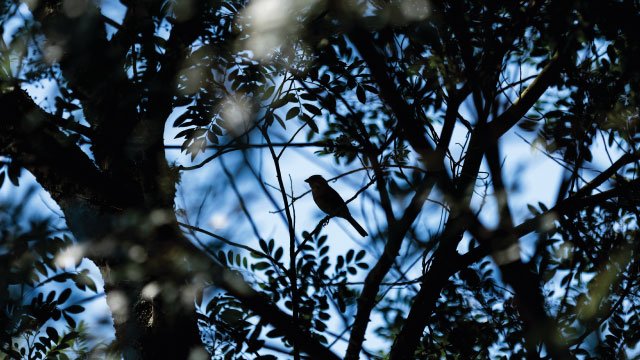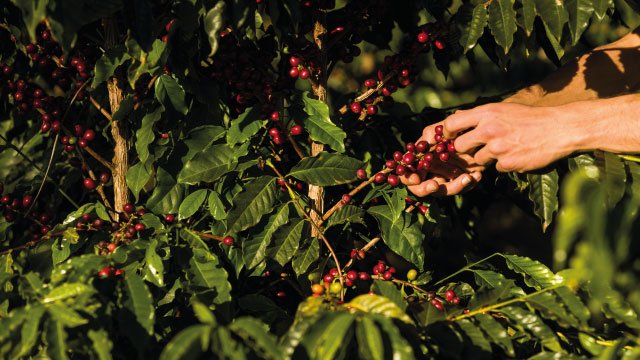Cultivating
Resilience to
Regenerate
the Future
Climate’s Challenge to Agriculture
Agriculture’s dance with climate is becoming increasingly complex. As weather patterns become more unpredictable, the task of nourishing the world grows more daunting.
As traditional methods falter under these new pressures, a clear message is signaled: the time for change is now. The
climate has changed; our agricultural practices must follow suit or face the consequences of a planet that’s growing more and more hostile to us.
Redefining Our Relationship with Nature
The first step toward resilience is a profound shift in how we, as farmers, engage with the natural world.
To withstand the extremes, we must restore balance where we can: in the soil beneath our feet, the water that nourishes our crops, and the biodiversity that sustains our ecosystems.
This balance begins with regeneration—reviving what has been depleted and making these elements the foundation of every decision we make.
One of the biggest problems with monoculture is that the low biodiversity of plants leads to a low diversity of all other components that make up the ecosystem of a farm. Insects are one of the creatures most affected by monoculture. Low biodiversity means that only insects that live on cultivated plants predominate, which without competition multiply and then become pests. In our agroforestry systems, we seek not only to improve soil and water, but to attract a great diversity of insects, thus reducing outbreaks of pests and diseases through biocontrol carried out by the micro-fauna created. One of the great examples are ladybugs, which despite appearing fragile, are great predators of different pests of the coffee plant.
Guapuruvu is one of the most used species in our different agroforestry systems. Native to different Brazilian biomes, it is known for being one of the fastest growing native plants, making it a great CO2 sequester. Furthermore, its open and diffuse canopy allows for optimal shading of the coffee, which combined with its great pruning capacity, creates an ideal shade system for growing coffee throughout the different seasons of the year. As if that weren’t enough, Guapuruvu is a leguminous plant, capable of fixing nitrogen in the soil, becoming an important source of nutrients for coffee plants.
Cover crops are one of the foundations of our regenerative management. In addition to protecting our soils from solar radiation and erosion caused by rain, these creeping plants grown between the coffee streets become important organic fertilizers for the nutrition of the coffee tree. To further enhance the beneficial effects caused by this consortium of plants, we use different species that flower at different times of the year, thus becoming a source of food and energy for different pollinators, such as bees.
The Anatomy
of Regeneration
Our ambitious journey is guided by four main pillars:
1 .
Restoring landscapes
to their natural harmony.
2 .
Implementing diverse
agroforestry systems
3 .
Adopting regenerative
management practices.
4 .
Fostering a strong
sense of community.
Each pillar is a step towards creating an agricultural system that can withstand amidst climatic uncertainty and thrive under it!
1. Landscape Restoration Beyond Boundaries
Our holistic view of the farm transcends its productive areas. We see it as part of a larger biome, integral to its microregion and watershed.
By embracing the farm’s entire ecosystem, we aim to harmonize productive and non-productive areas, creating a seamless blend of human and natural elements.
2. Agroforestry Systems: Diversifying for Resilience
Monoculture faces overwhelming challenges against the whims of a changing climate. Inspired by nature’s own resilience, we’ve embraced agroforestry, cultivating our coffee within biodiverse systems that mitigate climate impacts and enhance ecosystem services for our crops.
The Anatomy
of Regeneration
Our ambitious journey is guided by four main pillars:
1 .
Restoring landscapes
to their natural harmony.
2 .
Implementing diverse
agroforestry systems
3 .
Adopting regenerative
management practices.
4 .
Fostering a strong
sense of community.
Each pillar is a step towards creating an agricultural system that can withstand amidst climatic uncertainty and thrive under it!
1. Landscape Restoration Beyond Boundaries
Our holistic view of the farm transcends its productive areas. We see it as part of a larger biome, integral to its microregion and watershed.
By embracing the farm’s entire ecosystem, we aim to harmonize productive and non-productive areas, creating a seamless blend of human and natural elements.
2. Agroforestry Systems: Diversifying for Resilience
Monoculture faces overwhelming challenges against the whims of a changing climate. Inspired by nature’s own resilience, we’ve embraced agroforestry, cultivating our coffee within biodiverse systems that mitigate climate impacts and enhance ecosystem services for our crops.
3. Regenerative Practices: Nurturing Diversity
True regeneration challenges us to rethink our cultivation methods, ensuring that our care for the plants extends to the soil, water, and biodiversity. Our regenerative practices are designed to protect and enrich the environment, fostering a balance that promotes abundance.
4. Community: The Heart of Resilience
At the core of our environmental efforts is our community. It’s the people who bring our regenerative vision to life daily. By nurturing a sense of belonging and shared purpose, we strengthen the bond between humans and nature, ensuring our collective efforts lead to a resilient and abundant future.

Alley Agroforestry plot;

Alley Agroforestry plot;

Alley Agroforestry plot;

Alley Agroforestry plot;

Mantiqueira Agroforestry plot;

Mantiqueira Agroforestry plot;

Birdwatching at Pedra Preta farm;

Birdwatching at Pedra Preta farm;

Birdwatching at Pedra Preta farm;
because The world’s
best coffee
is the best coffee
for the world.
Join the Flavor of Regeneration!
Contact us now.

Impact Beyond the Cup
Support our mission for a regenerative future through every purchase!

Community & Collaboration
Partner up with farmers, roasters and consumers to pioneer a new era of coffee.

Sustainable Innovation
Witness our commitment with continuous improvement for ecological balance and exceptional quality.
